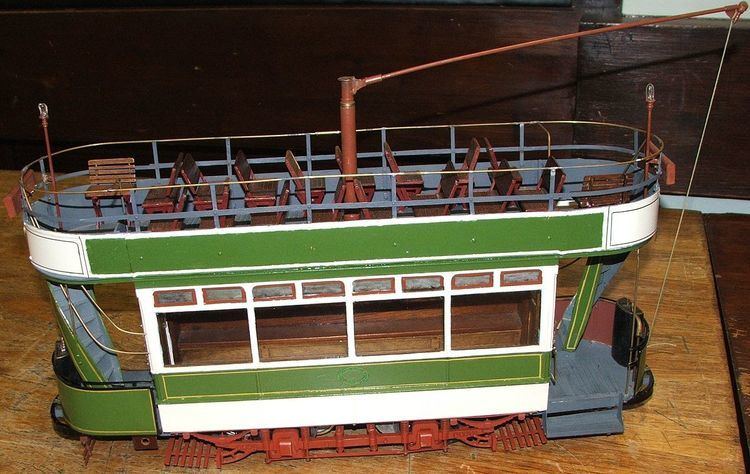Locale Chatham Close 30 September 1930 Track gauge 3 ft 6 in (1,067 mm) | Open 17 June 1902 Status Closed Propulsion system(s) Electric | |
 | ||
The Chatham and District Light Railways Company was the originator and first operator of the electric tramway system that served Chatham and Gillingham, and was later extended into Rochester, Strood and Rainham. The system was in operation from 17 June 1902 to 30 September 1930, when it was superseded by the motorbuses of the Chatham and District Traction Company.
Contents
Principal routes
At its inauguration the tramway had the following routes:
The network expanded for several years, and by 1908 there were eight operational routes:
(Note that "the Delce" referred to the area at the junction of Priestfields and Maidstone Road where Upper Delce Farm and Delce Grange were located. It did not refer to Delce Road which is locally known as the Delce.)
Depot
Grid reference TQ 77284 66645
The system's depot, which included a shed with a capacity of fifty tramcars, a boiler house and generating house, and an office building, was located to the south of Luton High Street opposite Christchurch.
After the closure of the tramway system the depot, with its original sheds and workshops, was used for buses until November 1995. In 1998–99 the depot was demolished, and the site redeveloped for housing. Its role in the C&DLRCo is commemorated by the name of its access road, "Tramways".
Tramcars
Tramcars had a Light Green and Ivory livery, and there were changes to the detailing of the paint scheme over the life of the tram system.
In earlier years the name of the "Chatham & District Light Railways Co" was written in large ornate letters along the full length of the ivory side panel.
The tram model shows the scheme as it was in later years. The ornate lettering had gone.
When the system closed all the tramcars were driven to a section of track opposite the Star Hotel in Gillingham to await their fate. The Chatham Observer newspaper recorded at the time that although most of the fleet was scrapped, some went on to live a few more years as static facilities in various Kent locations:
